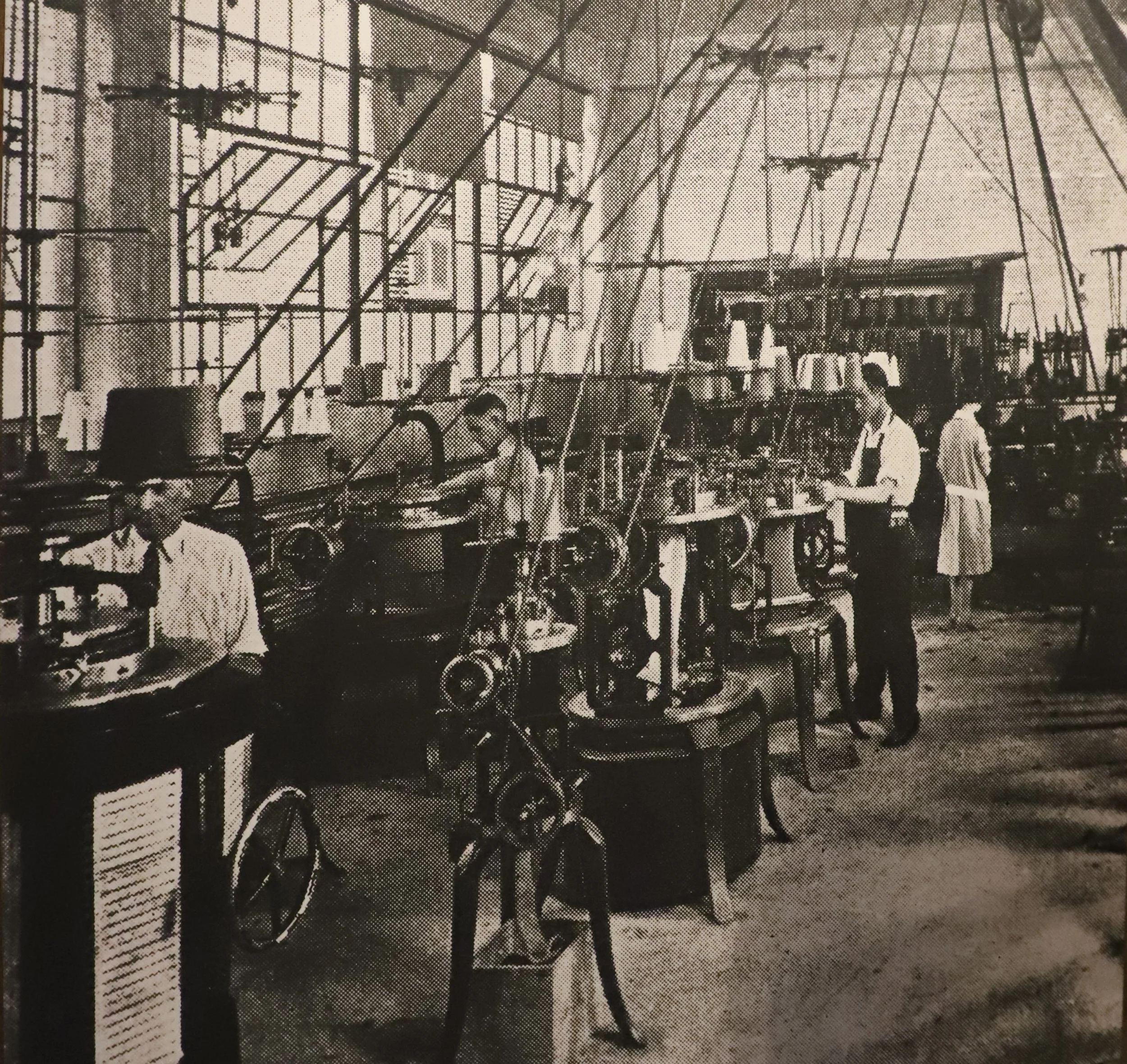Walk into any room wearing a well-made garment, and something shifts. Not dramatically—good cloth doesn't announce itself with fanfare. Instead, it communicates through subtlety: the way light catches a weave, how fabric moves with your body, the quiet confidence that comes from wearing something genuinely well-made. This is the language of heritage fabrics, spoken by mills that have perfected their craft across centuries and understood by those who recognize quality without needing it spelled out.
The finest custom suits begin long before they reach a tailor's hands. Every men's suit tailor who understands his craft knows that exceptional tailored suits for men start with exceptional cloth. They start in places where tradition isn't a marketing term but a daily practice, where the knowledge of working wool, cotton, and linen has been passed down through generations of craftsmen who understood that true excellence whispers rather than shouts.
The Geography of Heritage in Custom Suits
Fabric tells the story of place. The crisp clarity of Irish linen speaks to coastal air and generations of flax cultivation. Scottish tweeds carry the weight of Highland mists and the practical wisdom of shepherds who needed cloth tough enough for harsh weather yet refined enough for society. Yorkshire worsteds reflect the precision of industrial innovation married to centuries-old understanding of wool.
These weren't accidents of geography but careful cultivation of craft. The tradition of Scottish textile production benefited from abundant water sources ideal for processing wool. Yorkshire's combination of coal, water power, and skilled hands created the perfect environment for fine worsted production. Each region developed its signature not through marketing but through the accumulated wisdom of working with local materials under specific conditions.
Consider Loro Piana, the Italian mill that has been weaving since 1924. Their understanding of cashmere comes not from trend reports but from decades of working directly with herders in Mongolia and China, learning to recognize the finest fibers by touch. This isn't romance—it's practical expertise developed over time. When you wear fabric from such a mill, you're not just wearing cloth; you're wearing the accumulated knowledge of craftsmen who spent lifetimes perfecting their understanding of fiber.
The great British mills—Holland & Sherry, Dugdale Bros, Harrisons of Edinburgh—survived two world wars, economic upheavals, and countless fashion cycles through a combination of quality maintenance, market adaptation, and deep understanding of their craft. They learned that certain combinations of fiber, twist, and weave create cloth that improves with age rather than deteriorating. This knowledge becomes apparent the moment a skilled menswear tailor handles their fabrics, understanding how these heritage materials will translate into superior custom suits.
American mills are developing their own expertise with regional materials. While companies like Pendleton have worked with Western wool for over a century, their focus on heavier woolens and blankets demonstrates the character of American fleece—robust fibers that reflect the landscape they come from. Newer mills are now exploring how to adapt these regional wool characteristics for finer applications, creating opportunities for custom suits with distinctly American character.
Reading Heritage: How Suit and Tailor Connect Through Fabric
Understanding quality in fabric requires recognizing the conversation between fiber, construction, and finishing. The best heritage fabrics reveal their quality gradually, through details that become apparent only with experience.
Take hand feel, what the textile trade calls "handle." Experienced tailors can assess a fabric's quality within moments of touching it. They're reading the fiber length in wool—longer staple creates smoother, more durable cloth. They're feeling the twist in the yarn—too tight and the fabric becomes stiff and lifeless, too loose and it lacks body and resilience. The best mills have learned to balance these elements intuitively.
Weave construction tells its own story. A proper tweed carries weight without feeling heavy because the weaver understood how to create structure while maintaining flexibility. Fine suiting fabrics achieve their characteristic drape through precise control of warp and weft tension—something that can't be rushed or faked. When you see a jacket that hangs beautifully on the hanger and moves gracefully when worn, you're witnessing this technical mastery.
Color in heritage fabrics deserves particular attention. The finest mills use dye techniques that create depth rather than simply coating the surface. Proper indigo work, for instance, allows the natural color of the fiber to show through, creating richness that synthetic alternatives can't match. This is why certain blues age so beautifully while others simply fade.
Pattern work reveals another level of sophistication. A proper Glen check or herringbone isn't just decoration—it's structural. The pattern emerges from the weave itself, not from printing or surface treatment. This integration of pattern and construction creates fabrics that maintain their character through years of wear and cleaning.
The relationship between heritage fabrics and skilled tailoring becomes evident in the cutting room. Every experienced men's suit tailor often prefers working with established mills not just for consistency but for predictability. They know how Dormeuil's fabrics will behave under pressing, how Scabal's weaves will respond to hand-shaping, how Holland & Sherry's tweeds will settle over time. This intimate knowledge of suit and tailor relationships allows them to create custom suits that improve with wear rather than simply maintaining their original shape.
The American Revival: Custom Suits and Regional Character
While European mills continue to dominate luxury suiting fabrics, American textile production is experiencing growth in specialized areas. This development remains largely artisanal—smaller mills and individual weavers exploring regional materials and traditional techniques rather than large-scale luxury production.
Western American wool possesses characteristics that reflect the landscape it comes from. Sheep raised on high desert ranches develop fleece with particular resilience, though adapting these robust fibers for fine suiting requires specialized knowledge and technique.
Modern American mills are learning to work with these materials in ways that honor both the fiber and traditional techniques. They're developing distinctly American approaches to classic constructions, though this work remains specialized rather than mainstream. The results often intrigue tailors accustomed to imported fabrics—materials that offer different characteristics from traditional European options.
The relationship between American mills and men’s suit tailor craftsmen has evolved considerably. Where once tailors primarily worked with imported fabrics, many now actively seek out domestic options. This isn't just about supporting local industry—it's about accessing materials that offer something different from traditional European offerings.
Every customizable suit option benefits particularly from this development. When working with American mills, tailors often have more flexibility in fabric specifications. They can request specific weights, adjust finishing techniques, or even influence color development in ways that large-scale European production doesn't always accommodate. This creates opportunities for truly personalized custom suits that reflect both individual preference and regional character.
The revival extends beyond wool to other fibers. American cotton production continues to be significant, and some mills are now applying fine fabric techniques to domestic cotton in ways that create interesting alternatives to imported shirting materials. These developments, while still developing, enhance both customizable suit options and traditional tailored suits for men.
Living Heritage
The finest heritage fabrics share a common characteristic: they improve with proper use. Unlike mass-produced cloth that begins deteriorating from first wear, quality fabrics develop character and depth over time. This isn't accident but design—mills that have survived centuries learned to create cloth that rewards the wearer's investment with decades of service.
This philosophy extends to the relationship between fabric and craftsmanship. Heritage mills don't simply produce cloth; they create materials designed to showcase skilled tailoring. The best fabrics are partners in the construction process, responding well to hand-shaping, pressing, and finishing techniques that bring out their inherent qualities.
When you choose fabrics with genuine heritage, you're participating in a tradition that values longevity over novelty, craftsmanship over convenience, and quiet excellence over obvious display. These are qualities that don't photograph well for social media but reveal themselves daily to those who understand the difference.
The conversation between heritage fabric and contemporary wear continues to evolve. Mills adapt traditional techniques to modern requirements—creating lighter weights for air conditioning, developing wrinkle resistance without sacrificing character, improving color fastness while maintaining the depth that makes fine cloth distinctive.
Understanding this heritage doesn't require becoming a textile expert, but it does reward attention to detail and patience with quality that reveals itself over time. Whether you're considering your first custom suits or adding to an established wardrobe, the finest cloth speaks quietly but constantly—through the way it moves, ages, and adapts to the wearer who chose to listen. The relationship between suit and tailor, heritage fabric and discerning wearer, continues this conversation across generations.



